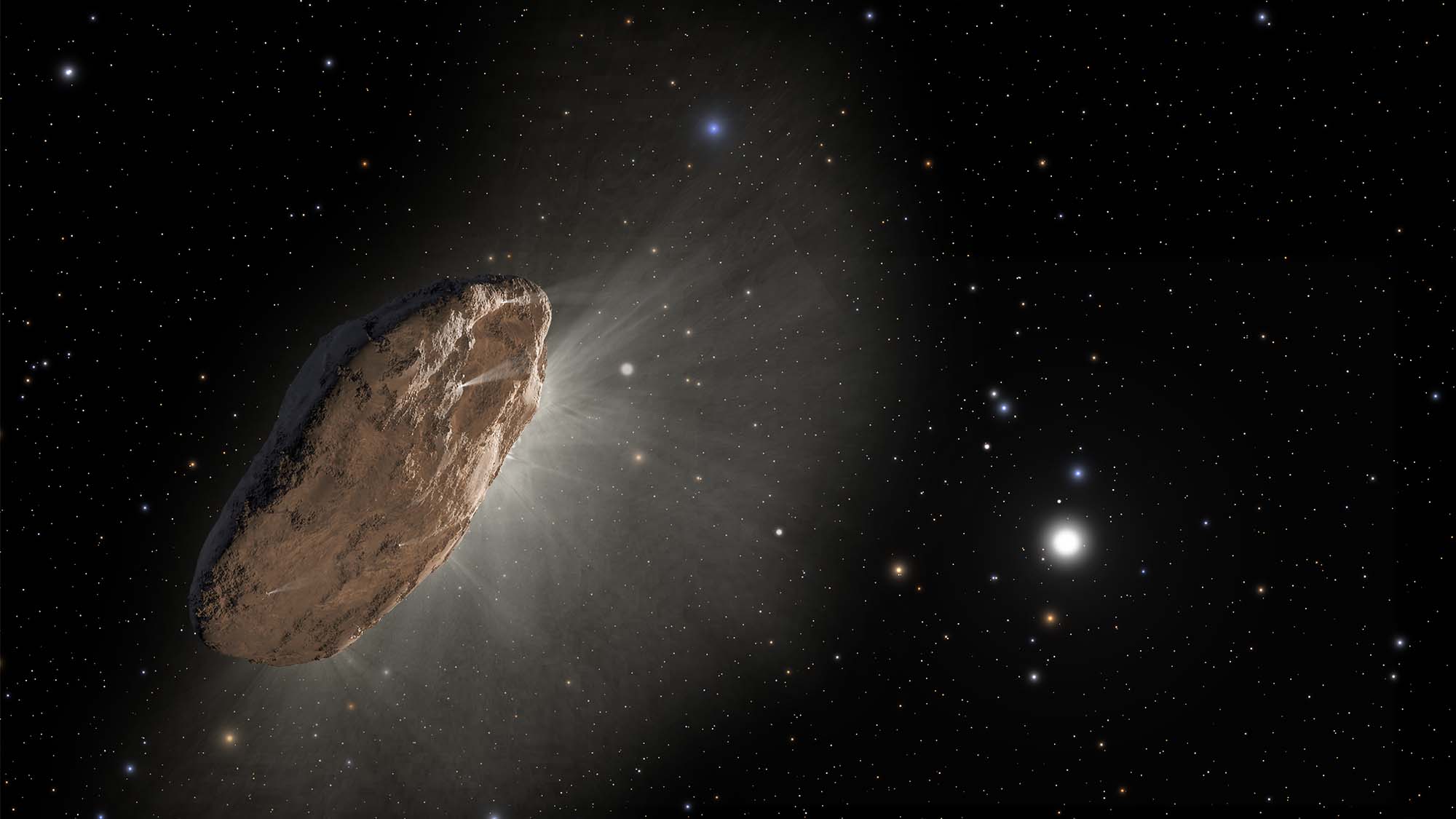Could Webb help us spot interstellar visitors like ‘Oumuamua'? NASA thinks so
Webb could give us a clear look at rogue comets and other visitors

In 2017, we spotted, for the first time, an interstellar object passing through our solar system. It was the cigar-shaped 'Oumuamua. To this day, we still don't know what it was or even precisely what it actually looked like, but NASA hopes that the new James Webb Space Telescope will give us a better look the next time around.
"So far, astronomers have confirmed only two of these interlopers from other star systems – 1I/'Oumuamua in 2017 and 2I/Borisov in 2018 – but many, many more are thought to exist," Ann Jenkins and Christine Pulliam, of the Space Telescope Science Institute, Baltimore, Maryland, wrote in a NASA blog post this week. "Scientists have had only limited ability to study these objects once discovered, but all of that is about to change with NASA's James Webb Space Telescope."
The sensitivity of Webb's instruments as well as its prime location a million miles away from the Earth's atmosphere and its interference gives Webb one of the clearest views of the universe possible. This should greatly enhance our ability to home in on transient objects and get a lot more data about them before they pass out of view of astronomers.
"The supreme sensitivity and power of Webb now present us with an unprecedented opportunity to investigate the chemical composition of these interstellar objects and find out so much more about their nature: where they come from, how they were made, and what they can tell us about the conditions present in their home systems," said Martin Cordiner, an astrophysicist at NASA's Goddard Space Flight Center and The Catholic University of America, as well as the principal investigator for the Webb Target of Opportunity program.
"The ability to study one of these and find out its composition – to really see material from around another planetary system close up – is truly an amazing thing," Cordiner added.
When such a target of opportunity will appear can't be predicted, but there is a lot of material out there in the interstellar medium and space is a big place, so there's no telling how many interstellar visitors we actually get each year.
With Webb though, we should at least be ready for the next time one rolls through our backyard.
Sign up for breaking news, reviews, opinion, top tech deals, and more.
Analysis: Webb isn't even ready yet and we're already finding new things for it to do

The James Webb Space Telescope is still undergoing its mirror alignment process, so we won't even get the first real images from it for another month or two at least, but already we're finding new ways we can use it once it's ready.
Webb's first year of operations, known as Cycle 1, are already parceled out to various projects, like examining the TRAPPIST-1 system to look for an Earth 2.0 and looking for the first stars and galaxies to have formed in the universe.
But Webb can do so much more, and astronomers are eager to put its sensitive instruments to use in new and exciting ways, including some we never planned.
"With Webb, we can do really interesting science at much fainter magnitudes or brightnesses," said Cristina Thomas, assistant professor of astronomy at Northern Arizona University. "Also, we've never been able to observe interstellar objects in this region of the infrared [spectrum]. It opens a lot of opportunities for the different compositional signatures that we're interested in. That's going to be a huge boon for us!"

John (He/Him) is the Components Editor here at TechRadar and he is also a programmer, gamer, activist, and Brooklyn College alum currently living in Brooklyn, NY.
Named by the CTA as a CES 2020 Media Trailblazer for his science and technology reporting, John specializes in all areas of computer science, including industry news, hardware reviews, PC gaming, as well as general science writing and the social impact of the tech industry.
You can find him online on Bluesky @johnloeffler.bsky.social